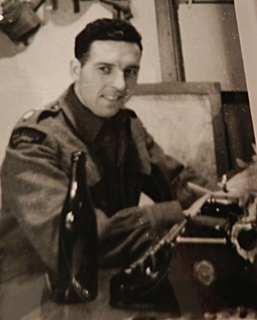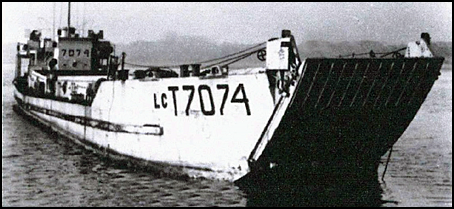Setting the Stage
The majority of Canadians, however, came that day by sea in broad daylight. The Canadian force was made up of the 3rd Canadian Infantry Division, the 2nd Canadian Armoured Brigade, units of the Canadian Royal Canadian Artillery, Royal Canadian Engineers and other specialist groups.
The infantry regiments of the 3rd Division were:
7th Infantry Brigade – The Royal Winnipeg Rifles, the Regina Rifle Regiment and the 1st Battalion, the Canadian Scottish Regiment.
8th Infantry Brigade – The Queen’s Own Rifles of Canada, Le Regiment de la Chaudière, and the North Shore (New Brunswick Regiment).
9th Infantry Brigade – The Highland Light Infantry of Canada, the Stormont and Dundas and Glengarry Highlanders, and the North Nova Scotia Highlanders.
The Cameron Highlanders of Ottawa (Machine Gun) Regiment were also in the 3rd Division.
Inside Track
What's up - Breakfast was a Hint
Barbed Wire - to keep us in
In England in the spring of 1944, training was completed and practice landings had taken place. Vehicles had been water proofed. All was in readiness, spirits were high. Security was of the greatest importance and during the first part of May units were confined to their camps. In our case, we erected a tented camp and surrounded it with barbed wire. The wire was not to keep people out but to ensure that we stayed inside.
The Waiting Game
Later in the morning, we loaded onto a landing craft tank (LCT) four tanks, one lorry and my jeep. The LCT was commanded by a lieutenant from the Australian Navy. Its crew included an ensign and eight other ranks. Immediately after loading, we moved a couple of miles offshore and rested at anchor until the invasion began.
While the crew of the LCT had their own mess and sleeping area, there were no eating facilities and no sleeping quarters for us. The only shelter was a room with no portholes about 10 feet by 15 feet in which there were some benches and a couple of tables.
Life on a Landing Craft Tank (LCT)
| Life on board was tolerable when the weather was fair, but when the weather was bad, it was a miserable place to be. Each person was on his own for eating and sleeping. While the new ration packs contained such things as cigarettes, toilet paper and candies, the main staples were still hard biscuits and canned beef. |
On Sunday, June 4, it became cold and stormy with rain and strong winds. We were all forced to crowd into the shelter and rest as best we could.
Monday afternoon, June 5, word was received that the invasion was on and our convoy began to move about 6 p.m. At the same time, convoys were starting out from ports all around Southern England. The invasion having been put in motion, we were then allowed to open the sealed packages which contained maps of the invasion area and other information. The group on our LCT was assembled early in the evening for the briefing. It concluded with the reading of the message from Gen. B.L. Montgomery, commander of the allied land force. Copies of the message were handed out.
The Seas were Rough
The seas were quite rough. There was radio silence.
| |


 RSS Feed
RSS Feed